Street literature is a unique literary genre in that it does not “conform to the standards of mainstream publishing, where tastes are dominated by whiteness and middle- and upper-class aspirations” (Honig, 2011, p.xii). Instead, it tells stories from the “hood,” disadvantaged areas of the inner city that lack resources and opportunities. Street lit authors like Sister Soulja, K’wan, and Teri Woods set out to write stories which take place in their neighborhoods and share the realities of a world outside of white suburbia.
Street lit features “raw, gritty, urban stories set in the violent, dangerous, familiar, and exhilarating landscape of the streets” (Honig, 2011, p.ix). The elements which comprise street lit include:
- Characters: Oftentimes, but not always, African-American. Reymundo Sanchez’s My Bloody Life (see below) features a Latino protagonist
- Stories with one or more of the following themes: Survival; crime and violence, sex; drug dealings; robberies; prostitution; betrayal and revenge
- Setting: Usually disadvantaged areas, urban African-American neighborhoods, or large metropolitan cities (e.g. New York, Philadelphia, Miami). However, some street lit takes place in less prominent cities (e.g. Richmond,VA and Gary, ID)
- Hip hop elements: Rap music, street fashion (brand name clothing), expensive cars, jewelry, and money
It is important to note that street literature is not the same as urban literature. While street literature contains the elements mentioned above, themes in urban literature can be much broader and may not necessarily center around drugs, sex, or money. For example, a piece of urban literature may focus on life lessons, while still being set in a disadvantaged area.
Our intent is to construct a list for teen readers interested in exploring the genre of street lit. All selected works have general appeal to this age group, as they feature teenage protagonists and offer views into the stark realities of their lives. While a “universal teen experience” does not exist, the following works offer an array of unique perspectives, elements of which even a teen reader unfamiliar with the genre may be able to relate to. Ultimately, we aim to offer a balanced list that reflects the locational, experiential, cultural, and sexual diversity present in street lit.
If you’re new to street lit, we recommend starting with:
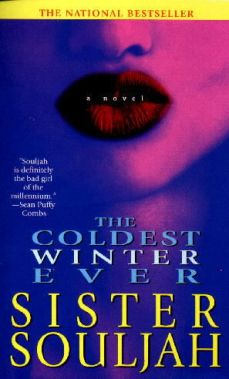
Souljah, S. (1999). The coldest winter ever. New York: Simon & Schuster.
Seventeen-year-old Winter Santiaga is determined to stay on top after the arrest of her father, one of New York’s biggest drug czars, leading her to use an arsenal of deceptive tactics and schemes to make money and–most importantly–to survive. Souljah’s A Deeper Love Inside is the sequel to this classic, following the story of Winter’s sister, Porsche Santiaga.
If you’re looking for a street lit series filled with romance and suspense, we recommend:
Woods, T. (1999). True to the game: A Teri Woods fable. New York: Teri Woods Publishing.
This story follows the romance between Gena, a street-smart Philadelphia teenager, and Quadir, a wealthy cartel associate, during the 1980s. They both find themselves in predicaments that test their “ride or die” relationship when their enemies come after them, in this tale of betrayal, family drama, and love. Start with True to the Game I in this three book series.
If you’re looking for a street-lit novel featuring an African American male protagonist:

Seven. (2008). Gorilla Black: A novel. New York: One World Books.
Growing up in Virginia’s projects with an uncaring and alcoholic mother, Bilal Cunningham finds refuge in the works of poets like Shakespeare. But after his little brother Keon is murdered, Bilal’s life goes downhill, and he turns to the lucrative life of a drug dealer. Bilal falls in love with his childhood friend Starr, but her descent into drug abuse and the dark secrets she keeps threaten to break the last of Bilal’s humanity.
If you’re looking for a street lit title featuring a Latino male protagonist:
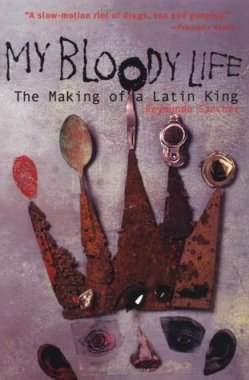
Sanchez, Reymundo. (2000). My bloody life: The making of a Latin king. Chicago: Chicago Review Press.
In this memoir, Puerto Rican Reymundo Sanchez provides an account of how his abusive childhood led him to turn to a life of sex, drugs, and alcohol in 1980s Chicago. He details how fear and his need for a support system fueled his decision to join the notorious street gang, the Latin Kings. Sanchez provides a candid look at the violence, ruthlessness, and bleakness pervasive within gang culture.
If you’re looking for a street lit novel featuring LGBTQ characters:
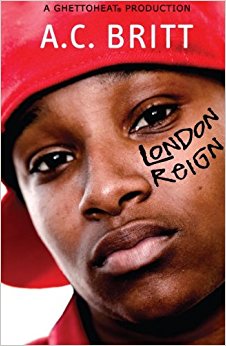
Britt, A.C. (2007). London reign. New York: Ghettoheat.
Androgynous teenager London Walters must contend with the violence of Boston’s inner streets, as well as her abusive and alcoholic father. But when she is kicked out of her home for failing to conform to the role of a traditional daughter, London moves to Detroit, where she creates a new life for herself. While struggling for acceptance and doing what she must to survive, London finds herself embroiled in conflicts involving secrets, love, and betrayal.
5 Resources Used to Develop the List (w/ explanations):
Brooks, W. & Savage, L. (2009). Critiques and controversies of street literature: A formidable literary genre. The ALAN Review, 48-55. Retrieved from https://scholar.lib.vt.edu/ejournals/ALAN/v36n2/pdf/brooks.pdf
This paper primarily discusses the appeal of street literature to readers, and also presents critiques of works within the genre. For readers unfamiliar with street literature, the “Definition, History, Characteristics” section provides a helpful introduction. The paper also includes excerpts from selected street literature titles, such as Teri Woods’ True to the Game I, which we highlighted above.
Dani’s World (2015, November 2). What is urban fiction? Setting the record straight: urban fiction vs street literature . Retrieved from https://www.youtube.com/watch?v=vxpxcO97MME
This 11-minute video features an author panel discussion on what constitutes urban fiction, and how that differs from street literature. The video helped inform our decisions on the selections we made, as we wanted to stick with works which stayed true to the street literature genre.
Honig, M. (2011) Urban grit: A guide to street lit. Santa Barbara, CA: ABC-CLIO, LLC
This book provides a comprehensive introduction on the street literature genre and serves as a useful tool for readers’ advisory services. This resource includes appendices listing street literature titles which are age and institution appropriate for young adult readers. In compiling our selections, Appendix B: Core Collection for Young Adults (Public Library) and Appendix C: Core Collection for Young Adults (School Library) were used as a reference, in conjunction with the supplied plot summaries for each title.
Morris, V.I. (2011) The readers’ advisory guide to street literature. Chicago, IL: American Library Association Editions
This book is a useful resource for librarians providing readers’ advisory on street literature. Aside from providing an introduction to the genre, it presents a selection of “teen-friendly” titles and discusses how they can be incorporated into a library’s collection. Specifically, the chapter entitled “The Diversity Within Street Lit” gave us an idea of how to develop a diverse street lit collection representating different backgrounds, characters, and themes.
Morris, V.I. (2011) The street lit author and the inner-city reader. Young Adult Library Services, 10(1), 21-24. Retrieved from http://web.b.ebscohost.com.queens.ezproxy.cuny.edu/ehost/pdfviewer/pdfviewer?vid=4&sid=c0924f4a-1169-4748-9e36-fe9005859de5%40sessionmgr120
This short article discusses the appeal of street literature for inner-city teenagers. It was consulted for informational purposes to learn more about the genre.









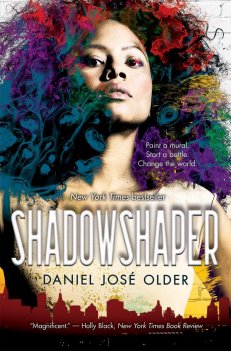 see themselves not as villains, but as heroes who are capable of doing amazing things. Author Wendy Shang said that it was important for children to see themselves in books because it gives children hope to pursue their goals and build aspirations. Bill Koenigsberg puts himself in his characters to show that while coming out as gay has its opponents, he assures readers that they are still loved and are no different from anyone else in the world.
see themselves not as villains, but as heroes who are capable of doing amazing things. Author Wendy Shang said that it was important for children to see themselves in books because it gives children hope to pursue their goals and build aspirations. Bill Koenigsberg puts himself in his characters to show that while coming out as gay has its opponents, he assures readers that they are still loved and are no different from anyone else in the world. would suggest that librarians tap into them as a valuable resource. I would also want to appeal librarians to think about diversity as a goal for their libraries to show that they are inclusive intuitions. Along with sharing tips about forming teen advisory groups, creating book displays and book lists, conducting programs and outreach using materials with diverse characters, I would want to leave critics with this question: “imagine if you were a minority, female, gay, or Muslim, how would you feel if your library didn’t supply you with books you see yourself in?” In starting this thought-provoking challenge, my hope is that librarians come on board with the diverse books movement, and that all libraries will supply materials where youth can see themselves in the books they read.
would suggest that librarians tap into them as a valuable resource. I would also want to appeal librarians to think about diversity as a goal for their libraries to show that they are inclusive intuitions. Along with sharing tips about forming teen advisory groups, creating book displays and book lists, conducting programs and outreach using materials with diverse characters, I would want to leave critics with this question: “imagine if you were a minority, female, gay, or Muslim, how would you feel if your library didn’t supply you with books you see yourself in?” In starting this thought-provoking challenge, my hope is that librarians come on board with the diverse books movement, and that all libraries will supply materials where youth can see themselves in the books they read.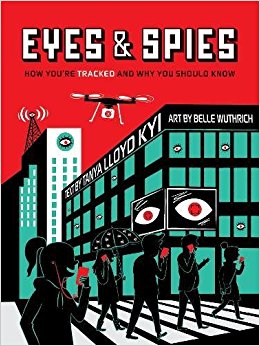

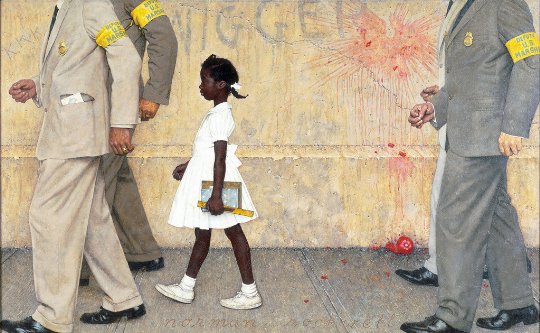
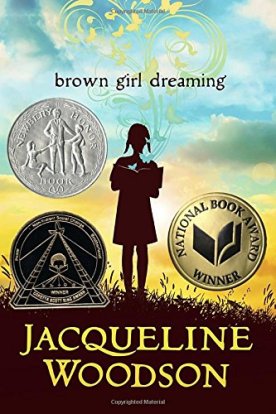
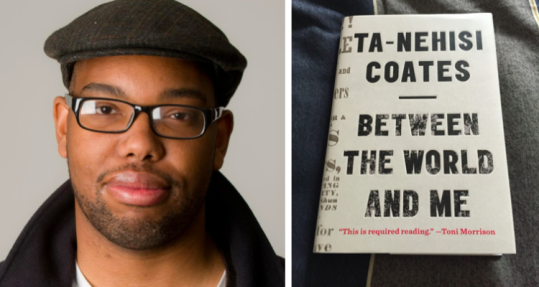

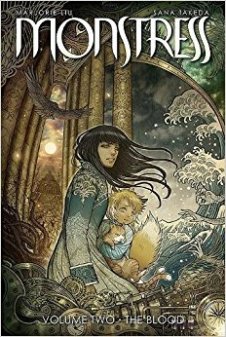 ing shows like Dragon Ball Z and Pokemon as a kid, it never appealed to me to pick up a comic/graphic novel from the stacks.When I saw that there was a comic on the syllabus, I decided to take a chance and read something different. Although I was confused at first on the order in which the dialogue is read, when I finally got a hang of it, I was captivated by the story line and use of color in the images.
ing shows like Dragon Ball Z and Pokemon as a kid, it never appealed to me to pick up a comic/graphic novel from the stacks.When I saw that there was a comic on the syllabus, I decided to take a chance and read something different. Although I was confused at first on the order in which the dialogue is read, when I finally got a hang of it, I was captivated by the story line and use of color in the images.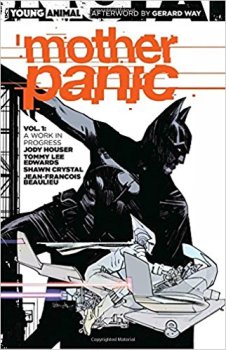 r Panic. Vol 1, A Work in Progress. DC Comics, 2017.176 pages. Tr. $16.99, ISBN 978-1401271114
r Panic. Vol 1, A Work in Progress. DC Comics, 2017.176 pages. Tr. $16.99, ISBN 978-1401271114
 ople experience. While their teen titles are not as extensive, as they just started publishing for teens only a few years ago, most works seem to fall under the historical or contemporary fiction genre. For example, Stronger Than You Know and The Summer I Found You by Jolene Perry are contemporary fiction titles that has themes of romance, abuse, and self esteem issues. Laura
ople experience. While their teen titles are not as extensive, as they just started publishing for teens only a few years ago, most works seem to fall under the historical or contemporary fiction genre. For example, Stronger Than You Know and The Summer I Found You by Jolene Perry are contemporary fiction titles that has themes of romance, abuse, and self esteem issues. Laura Hurwitz’s Disappear Home is a historical fiction title that has themes of abuse, depression, and social concerns. If you would like to view other teen titles published by Albert Whitman & Company, you may visit
Hurwitz’s Disappear Home is a historical fiction title that has themes of abuse, depression, and social concerns. If you would like to view other teen titles published by Albert Whitman & Company, you may visit 
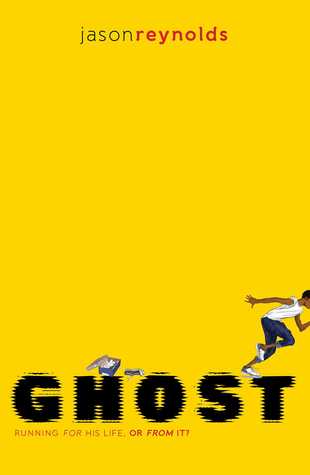
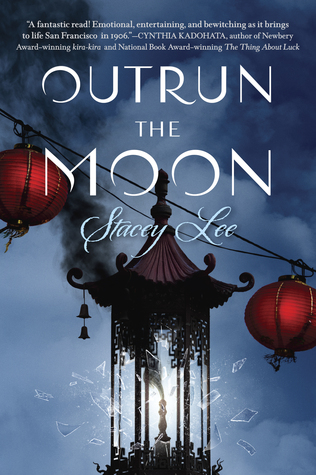
 Doctorow, Corey. Little brother. Tom Doherty Associates, 2010. 432 pages. Tr $12.99, ISBN 978-0765323118
Doctorow, Corey. Little brother. Tom Doherty Associates, 2010. 432 pages. Tr $12.99, ISBN 978-0765323118